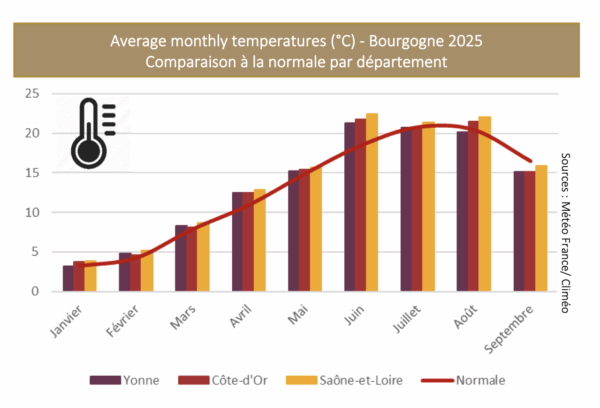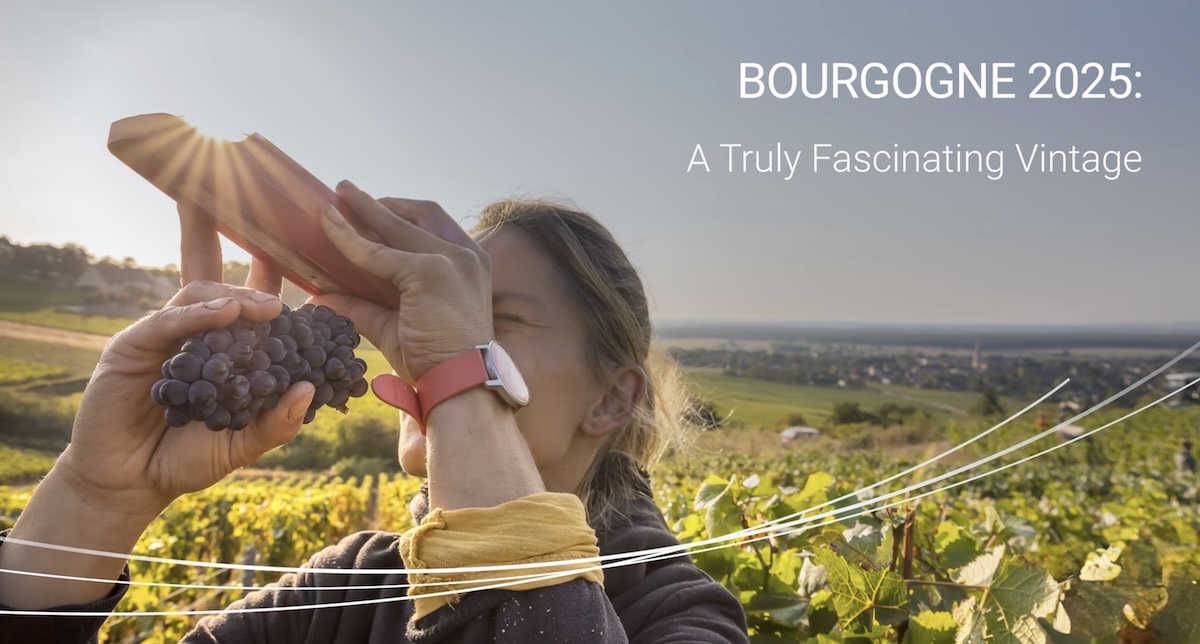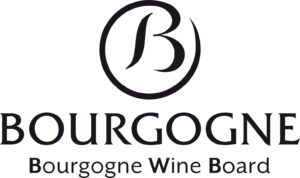Bourgogne: A Fascinating 2025 Vintage
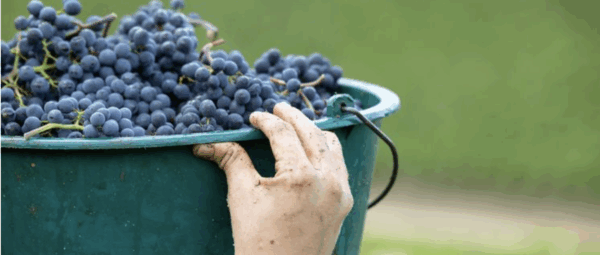
What an extraordinary year 2025 has turned out to be! While Bourgogne’s winegrowers regret a harvest that fell short in volume, they remain amazed by the unusual conditions that shaped this remarkable vintage. The growing season brought widespread millerandage and two intense heatwaves, both of which contributed richness and color. The rains that arrived during harvest—though dramatic—ultimately delivered the freshness that defines the region’s finest years.
This rare combination has given rise to wines that growers and merchants alike describe as “splendid,” “moving,” and “radiant.”
A month and a half after the harvest, the consensus across Bourgogne is clear: the wines are superb, in both red and white. The fruit was exceptionally healthy, and the berries, though small, were packed with flavor and color.
Vinifications ran smoothly, with quick, even fermentations supported by perfectly balanced sugar levels. The lively acidity typical of the greatest vintages remains intact, giving the wines energy, balance, and striking aromatic precision.
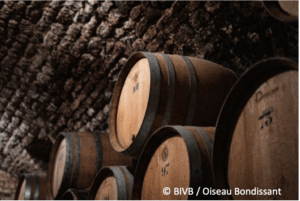 Reflecting Bourgogne’s mosaic of terroirs, microclimates, and harvest choices, the vintage reveals a captivating range of expressions.
Reflecting Bourgogne’s mosaic of terroirs, microclimates, and harvest choices, the vintage reveals a captivating range of expressions.
Many are already calling 2025 a vintage for the cellar—a year to set aside while enjoying older or more approachable wines in the meantime. In a year or two, we’ll discover whether these wines can also charm in their youth!
Two clear stylistic families emerge among the whites. Some express tension and freshness, with aromas of white-fleshed fruits such as pear and peach. Others are richer and broader, offering exotic fruit notes and a smooth, generous texture.
The early, sun-filled season (see the sunshine chart below) particularly benefited Aligoté, producing wines that strike a beautiful balance between acidity and alcohol.
Small, thick-skinned berries reached perfect ripeness, producing deeply colored wines with supple, silky tannins. Alcohol levels remained moderate, lending the wines a sense of poise and lightness. Their balance is underpinned by pure, focused notes of small red fruits—particularly cherry and raspberry.
Elegant yet concentrated, these reds combine finesse with structure and are expected to age beautifully over time.
For Crémant de Bourgogne, the 2025 harvest unfolded in two distinct waves.
The first took place under August sunshine, yielding structured, expressive base wines with impressive depth and aromatic clarity. The second, after early September rains, produced grapes with fresher, more delicate profiles.
The result is a vintage defined by its diversity—a wide aromatic spectrum that offers numerous blending possibilities and promises Crémant de Bourgogne of great complexity and character.
Discover the 2025 vintage in a video with Franz-Ludwig, Jérôme and Erwan, winemakers from the Mâconnais, Côte Chalonnaise, and Côte de Nuits.
These notes offer only general observations. Each wine reflects the individuality of its maker, and every cuvée must be tasted to appreciate its true profile.
Climatic Conditions of the 2025 Vintage
Relief and satisfaction, tinged with a little frustration over volumes—that sums up the feeling across Bourgogne. After a largely serene growing season, two heatwaves and some harvest-time rainstorms, growers are thrilled by the quality of the 2025 vintage.
In 2025, adaptability was key right up to the final snip of the secateurs. Beginning harvest on August 18 has become almost routine, but a harvest divided in two by the weather remains unusual.
A Season That Began Under Ideal Conditions
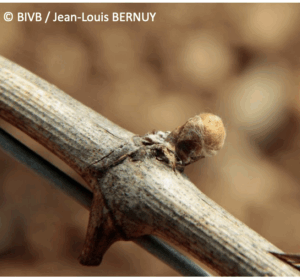 Winter brought genuine cold, and by late March, the vines were still at the woolly-bud stage. Gradual warming then stirred the buds to life, with the first green tips visible in early April. Mid-budbreak occurred on April 8, right in line with the 31-year average, though with notable regional variations.
Winter brought genuine cold, and by late March, the vines were still at the woolly-bud stage. Gradual warming then stirred the buds to life, with the first green tips visible in early April. Mid-budbreak occurred on April 8, right in line with the 31-year average, though with notable regional variations.
Early April’s near-summer warmth accelerated growth. Frost season, however, was not yet over: afew early parcels—particularly in the Côte d’Or (Saint Aubin Frionnes, Chassagne-Montrachet La Platière, Aloxe-Corton Pouget) and Saône-et-Loire (Maranges, Rully, Lugny, Fuissé, and others)—suffered minor frost damage on lower slopes, where cold air had pooled overnight in these frost pockets. Only buds close to the ground blackened, leaving overall impact limited.
© BIVB / Jean-Louis BERNUY
A Rapid Start to the Growing Season
By mid-April, the vegetative cycle was in full swing. With mild temperatures and timely rainfall, the vines developed rapidly, putting 2025 on track to be one of the earliest vintages. Early May thunderstorms occasionally brought hail (notably in the Mâconnais, northern Chablis area, and southern Auxerrois), though damage was confined to leaf perforation. Cooler weather that followed slowed growth, but inflorescences remained well formed.
A Two-Toned Flowering
The very first flowers appeared as early as May 26. Nearly summer-like temperatures during Ascension weekend (May 29–31) triggered a rapid, explosive bloom in the earliest-ripening parcels, and kickstarted flowering even in the more delayed areas. In these later sectors, however, rain and humidity during bloom led to coulure and millerandage, with some vineyards already seeing a decrease in their harvest potential.
This was particularly true in the southern Mâconnais, where flowering was further disrupted by a hailstorm on June 1. These conditions also increased disease pressure, with outbreaks that needed careful management. On June 14, the Châtillonnais suffered from strong winds and hail that damaged almost 400 hectares of vines—the most severe losses were noted in Obtrée, Chaumont-le-Bois, Vannaire, Massingy, Mosson, and Belan-sur-Ource.
Two Heatwaves: Favorable for Ripening, Challenging for Yield
By mid-June, the tiny berries were beginning to form when France was hit by its first heatwave of the summer, during the second half of the month. The extreme heat brought meteorological instability, with sporadic, violent thunderstorms sweeping through the region. The vine, a plant that thrives in warmth, took full advantage of the conditions. Yet the impact on future yields soon became apparent: skins thickened, berries remained small, and the pulp content decreased. Temperatures reached exceptionally high levels rarely seen before—35.8°C on June 22 in northern Saône-et-Loire, 34.2°C in the south, and 38°C in the Côte d’Or.
© BIVB / Jessica VUILLAUME
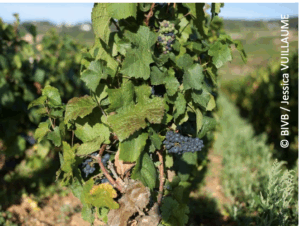 The thermometer continued to climb. In early July, temperatures flirted with 40°C across the region, accompanied by highly localized storms—some bringing hail. Where rain fell, it proved a blessing, reviving vines and sustaining berry growth; but in the drier sectors, vines entered a phase of hydric stress.
The thermometer continued to climb. In early July, temperatures flirted with 40°C across the region, accompanied by highly localized storms—some bringing hail. Where rain fell, it proved a blessing, reviving vines and sustaining berry growth; but in the drier sectors, vines entered a phase of hydric stress.
The first signs of veraison appeared during the first week of July. Growers were delighted by the excellent sanitary condition of the vineyards and the abundance of clusters. Yet they also noted the berries’ small size—a positive indicator for concentration, but a concern forjuice yield when it came time to press.
Through most of July, ripening progressed under seasonally normal temperatures, until a new series of hailstorms late in the month dampened morale once more. Hail fell on July 20 in the Côte Chalonnaise, on the 24th in the Yonne, and on the 25th in the Mâconnais. The Auxerrois was particularly affected, notably around Coulange-la-Vineuse and Saint-Bris. Saône-et-Loire was not spared either, with storms striking Azé, Saint-Gengoux-de-Scissé, Saint-Boil, Chenôves, Saules, and Culles-les-Roches.
Rainfall distribution across Bourgogne was extremely uneven, creating significant disparities between parcels: those receiving adequate rain continued ripening smoothly, while others, deprived of moisture, stalled under stress. Between early July and early August, some areas saw as much as 15 to 20 mm of rain, while others received barely 3 mm.
Ripening concluded under yet another heatwave that gripped France from August 8 to 18. The vines again thrived in the warmth, and the grapes ripened rapidly—though some sectors showed signs of sunburn on the most exposed fruit.
Two Vintages in One
As early as August 18, the first pickers entered the vineyards to harvest grapes destined for Crémant de Bourgogne. Just then, a cold front swept across France, abruptly ending the heatwave and bringing much-needed rain—especially to the northern part of the region—reviving vines that had been suffering from water stress.
From that point on, the harvest unfolded in two distinct phases, divided between the earliest-ripening plots and those that matured later, depending on both local weather and site exposure. Choosing the right picking date required patience and the steady confidence that comes only with experience. By late August, the weather had turned unpredictable, forcing growers to weigh sugar and acidity levels in each parcel and to taste berries to judge skin texture and flavor maturity. Most analyses revealed excellent sugar concentrations and well-preserved acidities.
Unsettled conditions sometimes disrupted the organization of harvest teams, and a few estates—including the Hospices de Beaune—even paused their picking to allow later parcels to reach fullmaturity.
By just after mid-September, the harvest was complete throughout Bourgogne. The young wines now resting in cellar show excellent promise. Quantities are average, but the fruit’s excellent health and the purity of the juice have yielded a high-quality vintage.
